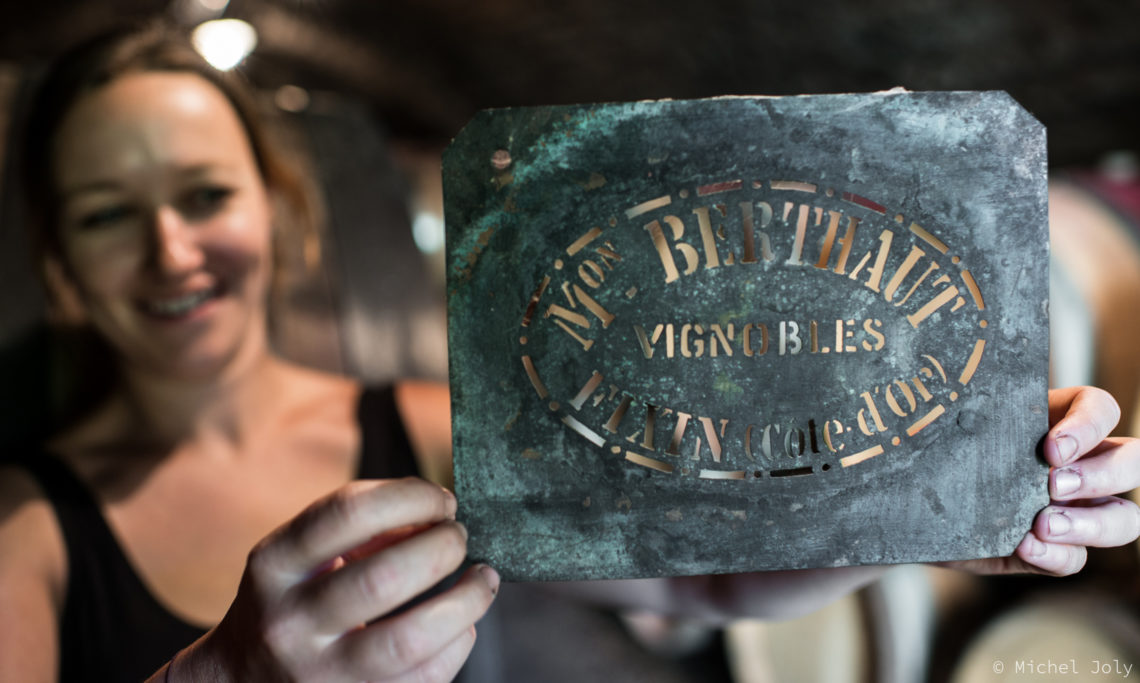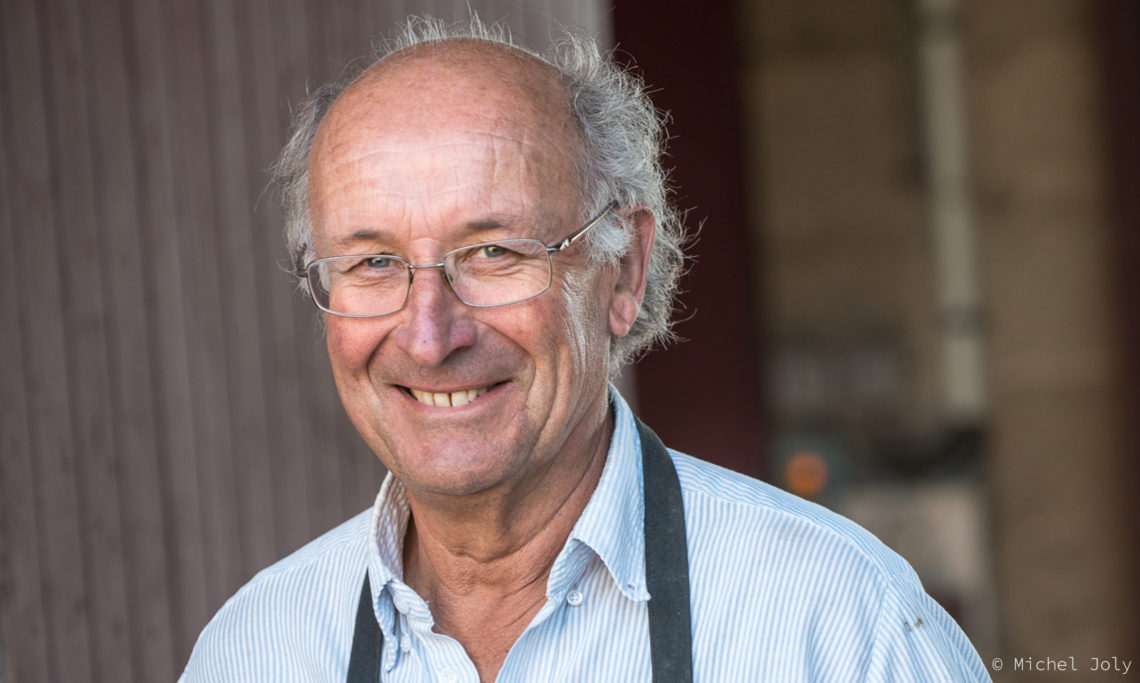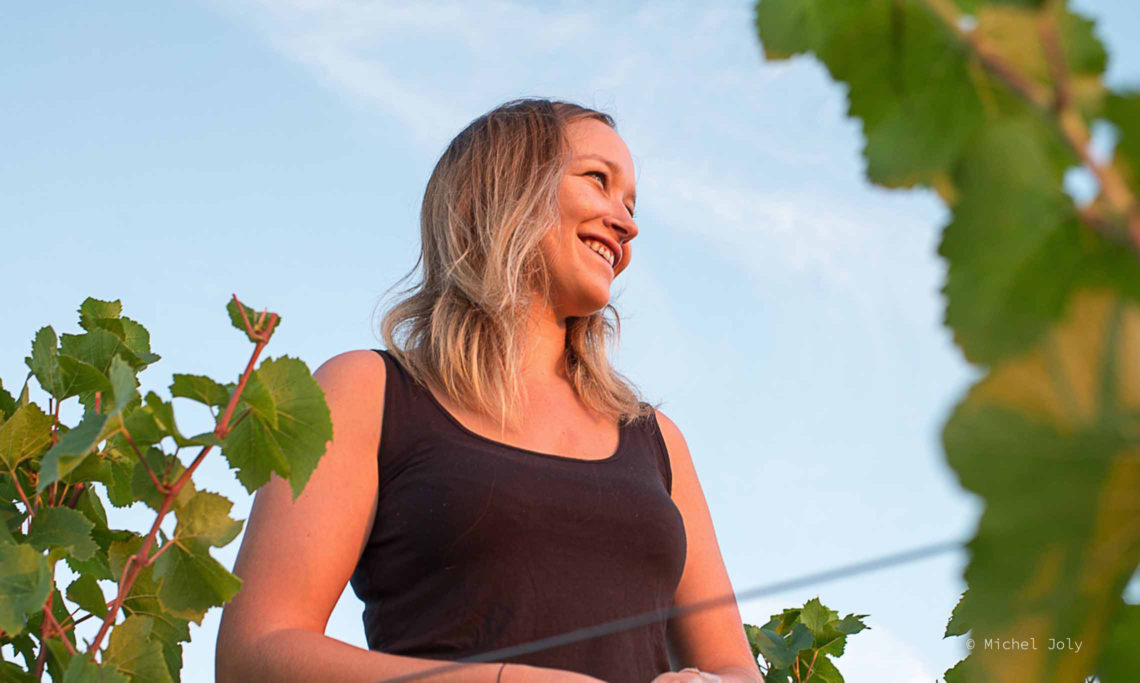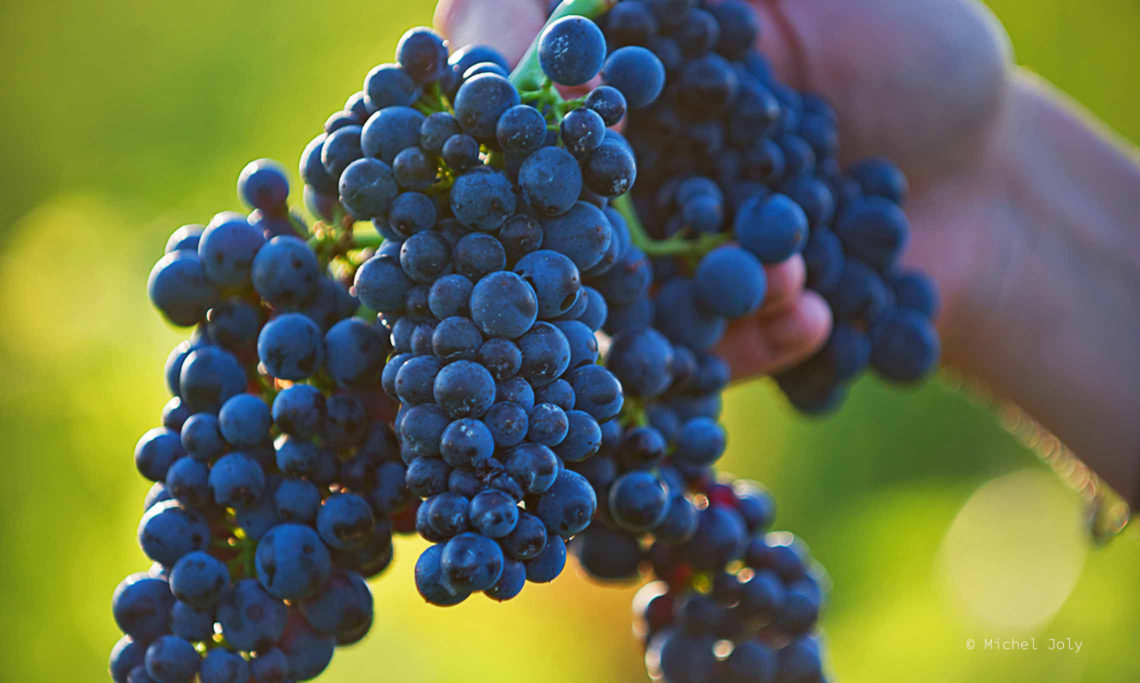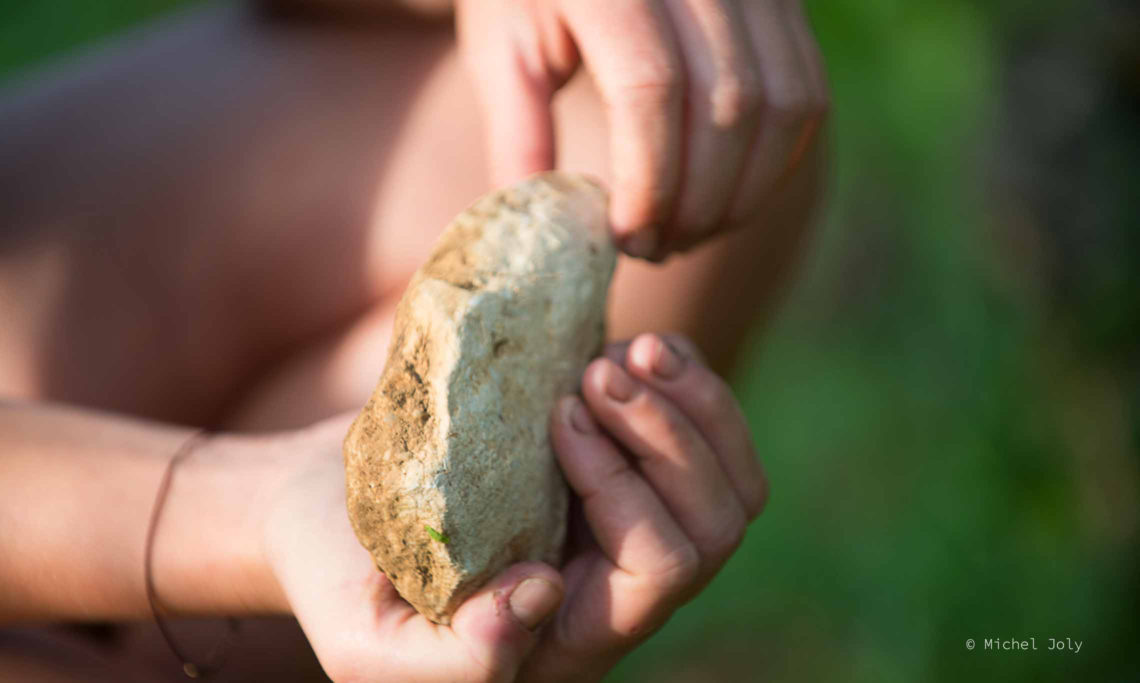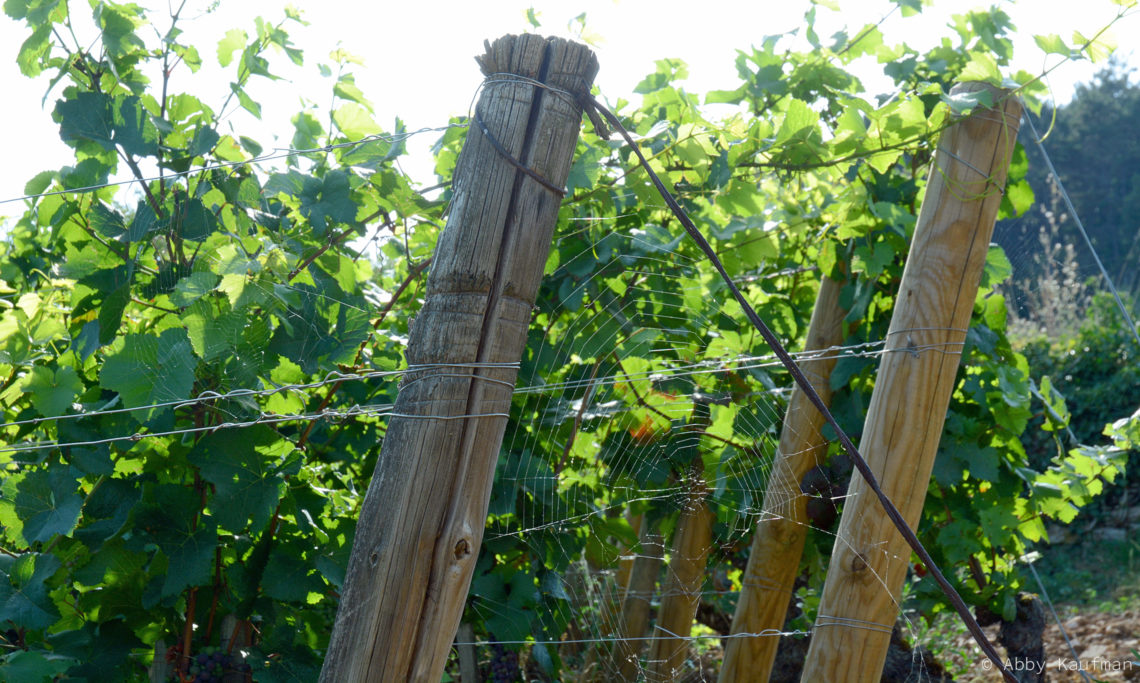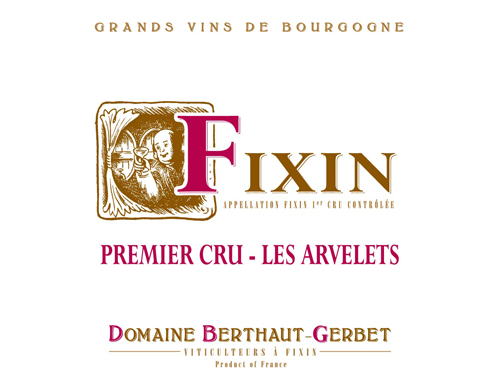Domaine Profile
- Location: Fixin, Côte de Nuits, Burgundy
- Size: 16.0 ha (39.5 ac)
- Varieties: Pinot Noir, Chardonnay
- Viticulture: Sustainable, organic methods
- Vinification: Whole cluster inclusion depends on the cuvée. 3-5 day cold maceration, ambient yeast fermentation. Aged in concrete tanks or barrels (0-50% new). No fining, some filtration. Minimal SO2 added after harvest and malolactic fermentation (approx. 20ppm at bottling).
In 1693, a motto was carved into a stone lintel in the Berthauts' house: Bien faire vax miev que dir, “doing right is better than talk.”
Amélie Berthaut is already receiving a lot of attention. She is indisputably charming, but more importantly, she is hard-working, thoughtful, and talented. Her prevailing quality, however, is humility. For example, she turned down Daniel Johnnes’ invitation to the 2018 Paulée in San Francisco because “I’m not ready,” even though we all thought she was. Bien faire vax miev que dir.
Amélie has received an impressive array of vineyards from her mother and father who owned and managed separate family domaines. The newly-baptized Domaine Berthaut-Gerbet includes all the vineyards of Domaine Denis Berthaut and parts of the vineyards of Domaine François Gerbet, totaling 16 hectares located in the Hautes-Côtes de Nuits, in the villages of Fixin, Gevrey-Chambertin, Chambolle-Musigny, Vougeot, and Vosne-Romanée.
There are small plots of wine collector catnip in Cazetiers, Lavaut, and Petits-Monts, but the heart of the domaine, physically and emotionally, is in Fixin. It was Amélie’s Fixins that most piqued our interest when we first heard about her. Why? Because with all due respect, a really good Vosne or Gevrey, great examples of those are not uncommon, whereas great examples of Fixin were thought to be extinct.
In Making Sense of Burgundy, Matt Kramer laments that “one of the oddities of Burgundy is why Fixin remains one of the least-appreciated red wines of Burgundy.” In the 19th century, the main authors on Burgundy considered parts of Fixin to be the equal to Gevrey. Lavalle, in 1855, compared Fixin Les Arvelets to Gevrey [Clos] Saint-Jacques and noted that the Marquis of Montmort sold his Fixin La Perrière for the price of his Chambertin.
There are several reasons for Fixin’s fall from grace. It takes a flagship domaine for a village to get noticed, and Fixin had been lacking one for decades. Amélie makes five Fixins, and there is another one in the making. Nothing would make her happier than Fixin to be taken seriously again. After tasting her 2016s, we think this is imminent. It is always exhilarating to witness the rise of young winemakers, especially when they revive a forgotten appellation. They become avengers; we like heroes. And there is a sense of wonder in experiencing something we had only heard or read about.
Even though Amélie receives a great deal of support from her parents, she decided last year that she could not oversee improvements on all fronts on her own. She hired her fiancé Nicolas Faure to be her vineyard manager while she focuses on winemaking, management, sales and the travel they require, and visitors to the domaine. Nicolas’ hiring was pragmatic more than it was romantic —his résumé didn’t suck. Prior to Berthaut-Gerbet, he worked the vineyards of Prieuré-Roch, DRC, and Chave. He is also an extraordinary winemaker in his own right at his diminutive one-hectare domaine which he treats as meticulously as a garden. His newest plantation, high above Nuits Saint Georges, is a dream of cutting-edge viticulture. With massal selections, higher plantation density, higher vine training, and échalas (staked vines), it is a lot like 19th century viticulture.
Everything at Berthaut-Gerbet now points to the hatching of a Grand Domaine. It will be gradual, thought-out, and real. This brings us to another saying carved on an ancient lintel in the building that serves as Berthaut’s tasting room and office: Rien par force, tout par amour, “nothing by force, all by love.” Appropriately, it is from Saint Francis de Sales, who, in addition to his proverbial patience, goodness, and mildness, happened to be a feminist.
Berthaut History
The Berthauts were first documented in Fixin in the 18th century but they have reason to believe they go back much further. Amélie represents the seventh known generation of Berthauts in Fixin. As the last member of the family tree, Amélie does not have any siblings or cousins. This troubles her, and she toys with the idea of passing her name on to her future children.
The Berthauts were once to Fixin what the Rossignols are to Volnay and the Mugnerets to Vosne. In 1896, Danguy and Aubertin listed no less than a dozen Berthauts (and Berthauds) as proprietors in twenty-three lieux-dits in the village. The list includes François Berthaut, Amélie’s great-great-great grandfather, as proprietor in Le Rosier and Combe Lavaux. It is likely that the first vineyards were purchased by François’ father, also named François. Here is the succession as far back as the family can trace it: François Berthaut (1780-1873), François Berthaut (1811-1898), Firmin Berthaut (1845-1920), Bernard Berthaut (1879-1913).
Guy Berthaut, Amélie’s grandfather, was born in 1912 and took over the family domaine in 1930. He started bottling at the domaine right after WWII and entered into leases on some of the vineyards in Gevrey-Chambertin that belong to the Mercier family of the Domaine des Chezeaux. The Berthauts still farm these parcels today.
Guy’s two sons took over in 1974. They worked closely together, sharing the work in the vineyards and the cellar equally, with Denis, Amélie's father, taking on more of the administration and sales of the trade, while his brother, Vincent, tended to sales to private customers. Vincent retired in 2006.
In the 1990s, critics wrote that the domaine was very good. “Less well-known than the two powerhouse landowners, domaines Gelin and Joliet, Domaine Berthaut is among the best in the district,” writes Matt Kramer. They also pointed to the wines’ great age-worthiness, but mentioned a prominent austerity in their youth.
Denis and Vincent Berthaut distrusted new oak and liked longer-than-fashionable aging in used oak. And because they had to work in several small cellars rather than a large one, some wines were racked into barrel or foudres after malolactic fermentation. This combination caused the wines to shut down for a long time. It didn’t matter to people who liked to cellar wines and the Berthauts enjoyed a loyal following among private customers. But palates were moving towards more fruit-driven wines that could be consumed shortly after bottling, so the domaine never made it big with commercial export or the international press.
Gerbet History
François Gerbet arrived in Vosne-Romanée in a tank called The Slayer.
He was born in 1922 to a family of farmers in Arras-en-Lavedan, an idyllic village in the Pyrenees. They family’s only claim to fame came about in the early 20th century when a strange story involving a Mr. Lemoine, diamonds, and a fake but convincing chemical formula for manufacturing them. Tens of thousands in hush money from De Beers was to keep him from releasing the formula. Subsequently, more hush money from De Beers (this time millions) to finance the construction of a diamond factory in Arras-en-Lavedan where Lemoine would continue his research. The eventual discovery by De Beers that despite the pictures they had been sent of it, no factory had been built, Lemoine was jailed for six years for extortion. Marcel Proust, a journalist disliked by François, later recounted the whole ordeal including his subsequent disappearance to South America with the millions from De Beers.
In June 1943, François received the order to report for the Service du Travail Obligatoire, the forced enlistment by Nazi Germany of hundreds of thousands of young Frenchmen to work as laborers for the German war effort. Like many others, François fled over the Pyrenees to Spain, from where he planned to make his way to North Africa to join the Free French Forces. But once in Spain, he and his compatriots were jailed while Franco’s government figured out what was in its best interest: turning the escapees over to the French, and therefore to the Germans, or sending them to the Allied forces. The latter prevailed. François arrived in Morocco in November 1943 where after a brief orientation, he was assigned as copilot and radio operator to a light tank called La Pourfendeuse, “The Slayer.” (For WWII buffs, François was a soldier in France’s 1st Armored Division, the 1ère DB, in the 2e Escadron du 2e RSAR. He landed in France in August 1944 on the troop transport USS Thurston for Operation Dragoon, the invasion of Southern France by the allied forces.)
After the south, the 1ère DB moved north to help liberate Lyon and then Burgundy. Lyon was liberated on September 3, Beaune and Nuits-Saint-Georges on September 8. La Pourfendeuse was the first of the allied vehicles to enter Vosne-Romanée on September 9. The tank was parked in front of the church and Domaine Sirugue. The villagers were euphoric. The Sirugue family invited a dozen soldiers including the crew of La Pourfendeuse to dinner. Their daughter, Suzette, caught François’ eye. At dinner, she seemed more attracted to François’ friend Jean. A photo taken that evening shows her with her hands on Jean’s shoulders, but the next morning morning, Suzette made her preference for François clear, and she offered to be his wartime pen pal.
François’ squadron encountered only moderate trouble until they left Burgundy. Things changed once they reached the Vosges. On October 14, La Pourfendeuse was caught in a German artillery barrage. The crew was forced to abandon the vehicle but François’ friend Jean was killed before he could exit the tank. “I tried twice during the night to go and retrieve Jean’s body,” remembers François, “in vain.”
François continued the war in the Ardennes and the Vosges. He was among those who opened the road from the Vosges to the infamous Colmar Pocket. On May 7, 1945, when the capitulation of Germany was announced, he had reached Innsbruck, Austria. On his first leave, he rushed back to Vosne-Romanée, to Suzette.
“On leave, he came back several times to Vosne-Romanée,” says Suzette. “Our friendship took an entirely different path. From the beginning, my father appreciated the man who would ask him for my hand.”
Suzette and François were married in 1946. “It is out of love for his beautiful Suzette that François will learn everything of the profession of vigneron and will formidably develop the vineyards she inherited,” writes Micheline Faliguerho in Jean de Bedous, a book about François’ wartime friend. We are indebted to Mme Faliguerho for most of the information above.
Suzette and François had three daughters, two of which, Amélie’s mother Marie-Andrée and Chantal, began working with their father in 1972. They took over from him in 1983 and ran the domaine together, completely separately from Marie-Andrée’s husband’s domaine in Fixin. We have not yet had the pleasure to meet Marie-Andrée, but from Amélie’s accounts she is a very strong person. We do bump into her father Denis regularly, and he couldn’t be sweeter. It appears that the apple fell at equidistance from the two trees.
Amélie
Amélie was born in 1988, an only child. She has memories of participating at harvest as a toddler. There are pictures of her carting grapes in her toy wheelbarrow. Later, she remembers having to write her homework with chalk on the cement tanks when her mother worked late in the winery. When she was ten, Amélie’s parents taught her how to recognize cork taint. She was good at it and became the family’s official cork taint snooper. No bottles were served at family reunions until she had cleared them.
Perhaps because she wasn’t a boy, her parents never pressured her to study winemaking. It did not occur to her either. She liked nature and was good at science, so in 2007, after high school, she set out to become an engineer in agronomy. She attended a compulsory two-year preparatory school in Dijon after which she was accepted at the prestigious engineering school Sciences-Agro in Bordeaux.
The curriculum began with an internship at an exploitation agricole, a commercial farming operation. “Given my family history, I wasn’t going to go learn about cows,” Amélie says. A winery counts as a commercial farming operation, so she interned at Domaine de La Tour du Bon, one of the best wineries in Bandol, where she was fully immersed in winery work for the first time. To her great surprise she loved it, all of it: “wine, tasting, everything required in the management of a domaine.” Furthermore, La Tour du Bon was run by a woman, Agnès Henry-Hocquard. “To see that a woman managed all this, that it was possible. Of course I knew it was possible, I’d seen my mother, but I guess I’d focused on her working like a maniac and always coming home late.”
Inspired by her internship, Amélie opted for a minor in viticulture in her second year at Sciences-Agro, and she began an engineering degree in oenology. Her second internship, which lasted six months, was at Rudd Winery in Napa. “It was a great work experience: the incredible work ethic of Americans, the detail, precision, and hygiene in the winery. But I didn’t learn how to taste. I was told to punch down this tank, to pump that tank over, etc., but it was never explained to me why.”
Amélie obtained her DNO (engineering masters in oenology) in 2011. She was now set on succeeding her parents but she wanted to experience a different approach to Pinot Noir. She took a job for six months in New-Zealand, at Crater Rim. “I learned more about tasting there than during my oenology studies,” she says. “Théo Coles, the winemaker, taught me how to taste the tanks throughout the winemaking process and that’s when I started to really think about winemaking and the changes that could be implemented at Domaine Berthaut: tannin extraction, mouthfeel, etc.”
Amélie returned to Berthaut for the 2012 vintage. “I was there to learn,” she says. “I wasn’t allowed to change anything and I didn’t say much. But I was given the little tank of Lavaux-St-Jacques to play with on my own, so I was happy.” After she was done with the vintage in Burgundy, she went back to work for Crater Rim for another six months, returning to Fixin for the 2013 vintage. Now she spoke her mind. “We can’t continue this or that; we need to sort more stringently; we need to be careful… 2013 was a late harvest. There was rain. It was hard to pick. It had been an all-around difficult year in the vineyards. Maybe because he was tired, my father told me ‘Well, since you know it all, you can make the wines.’”
He handed the winemaking responsibilities over to Amélie just like that, even though she was only 25 years old. He wasn’t angry though, he trusted his daughter. It was time. “And he was there to help,” she says. “My father is very cool. Most of my friends didn’t have the freedom he allowed me.”
Amélie wanted to return to Crater Rim for the 2014 harvest but her father put his foot down. If she wanted the domaine she had to commit to it, right then, and full-time. “I thought I had a few more years, but some of the leases were coming to an end. If I wanted them renewed, I needed to stay put.”
Viticulture
When she first took over, Amélie struggled with one vineyard that was too steep to be farmed with a tractor, but it is now farmed with a horse. Domaine Berthaut-Gerbet is now organic, except when it comes to fighting very intense powdery or downy mildew pressure. The dividing line between 100% organic and other methods is not drawn, as it is with many conscientious farmers, where intense pressure of these two disease begins. 2016 saw the worst mildew attacks on record.
As a reminder, there is no “good” method to fight these diseases. Whether conventional, organic, or biodynamic, all methods have a deleterious effect. There is no scientific research as to whether the use of chemicals in these limited instances will be more or less detrimental than copper in the long run, which is the only method for fighting mildew available to organic and biodynamic producers. There are convincing arguments from both sides, but the issue has not been rationally resolved. For now, it is an intuitive or faith-based choice.
Though lutte raisonnée gets a bad rap, let’s call Berthaut-Gerbet stringently lutte raisonnée. In the case of Amélie it certainly is not a load of crock. We would give her the keys to our house without a second’s hesitation.
Winemaking
There is increasing use of stems, though not systematically, and in greatly varying proportions, from 0 to 60%.
Like her father, Amélie prefers to ferment in cement tanks and has added new ones. She has painted the old as well as the new her favorite color —you will encounter it throughout the winery and the vineyards— a Red-Violet, RAL color 4002 to be precise. She wanted the domaine’s latest tractor to be that color, but her father refused.
Extraction is delicate. The wines are only pumped over until the end of fermentation, when they are punched down lightly by foot, a total of only four times on average.
The Berthaut cellar is noticeably frigid (7°C in winter) which allows long, reductive aging with moderate use of sulfur. In fact, because of the cold, Amélie’s wines are some of the slowest we know of to come around and to complete their malos. A little sulfur is added at harvest, then none until long after the tardy malos.
To eschew aging in tank or in her father’s old foudres, Amélie has had to acquire a double set of barrels quickly. (You need one full set for each of the two vintages in the cellar.) Consequently, there has been a little more new oak than she would like. Though her goal is 0 to 25% new oak depending on the wine. Some of the more prestigious cuvées have seen a higher proportion because they are small —one to three barrels— and because she was following the conventional wisdom of aging those in higher proportion of new wood because they could take it. She is rethinking that, and may put the newer barrels on the lesser cuvées, their larger production making it easier to absorb the new oak.
The wines are never fined. A light filtration is carried out on wines that are bottled early, usually the Bourgogne Les Prielles. At bottling, Amélie aims for 20 ppm free sulfur.
The Wines
Is it a cliché to call Amélie’s wines feminine? Perhaps. But in the context of the appellation as we knew it before her, and in comparison to her father’s wines, they are. Or maybe they are simply wines of the past and of the present.
Though Burgundy is hardly a region with a bounty of natural wine, several of the most exciting young winemakers are making vins de soif, quaffers, in contrast to vins de garde, wines to be cellared. Less based on structure, more on a free expression of fruit, these wines are more delicate and feminine, regardless of whether they are made by boys or by girls.
When we recently teased Sylvain Pataille about the structure that remains in his reds despite him being for all purposes (except that one) a natural wine producer, he quipped “Je veux faire des vins de soif qui se gardent,” I want to make quaffers that can age. It’s a witty, fine point. Not only does his description fit his own wines but those of Amélie’s fiancé Nicolas Faure, as well as those of their close friends Tomoko Kuriyama and Guillaume Bott at Chanterêves, and others, all part of a small group of locals who refuse to turn their back completely on the greatness of classic, age-worthy Burgundy, and fit snuggly into current fashion.
But Sylvain’s quip doesn’t exactly fit Amélie’s wines. By design, or rather by conviction, hers are just a few inches to the other side of the line: des vins de garde qui se boivent, wines to be aged that can be quaffed. It’s a subtle distinction. But contemporary, refined, detailed classicism, is what comes to mind when tasting an Amélie wine. We should point out that the others have started their domaines or micro-négoces from scratch whereas Amélie has not. There is a responsibility, a sense of duty, in the mantle she wears. She wears it happily and gracefully, which is not to say without her own strong signature and opinions. This is what we were hinting at when we said that we saw the hatching of a Grand Domaine at Berthaut-Gerbet: the size of the domaine, the quality of its holdings, great respect for what came before yet an iron-clad resolve to always do better, but also a sense of effortlessness in their taste.
Wines
-
White
-
Red

